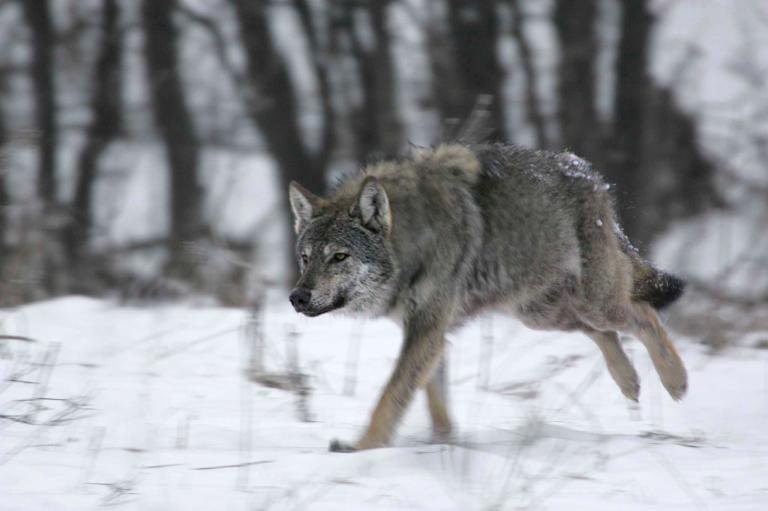When I arrived in Europe last year there was one thing that struck me about the continent: its thriving natural environment. Coming from New Zealand, I had been conditioned to see Europe as a kind of overpopulated boiling pot whose natural beauty and biodiversity had been nearly annihilated by centuries of environmental destruction. How pleasantly surprised I was to find it covered in forest, 45 percent of it, a percentage considerably larger than New Zealand. Not only this, but there were truly wild places. The forest teamed with wild boars, foxes terrorised the farms and vultures circled in the sky. Native birds and mammals were thriving. Europe was, and is, undergoing a peculiar wildlife resurgence. This is detailed in a 2013 EU report, Wild Life Come Back in Europe. The study uses a geographic notion of Europe and includes European Russia (ending at the Ural Mountains). It maps the growth of a range of species between 1960 and 2005. The results are very encouraging. The 1950s were the nadir for Europe’s iconic species. Wide scale persecution, over exploitation, land clearing, industrialisation, pollution, deliberate poisoning and habitat loss had driven Europe’s iconic fauna to the edge of extinction. Half a century later, however, things had changed. Between 1960 and 2005 european bison, the largest native herbivore, increased its wild population by more than thirtyfold. The largest populations are in Poland and the Carpathians, but new herds have recently been introduced in Germany, Romania, France and Spain, and they have a current Europe population of over 12,000. The alpine ibex population has increased fourfold over the same period, becoming a common sight in the Italian Alps. The eurasian elk, the largest living deer, more than doubled its population. Moving south and west from Scandinavia and Russia, elk have significantly increased their range into Europe’s north and east, with sightings as far west as Germany and Austria. Roe deer, the most common species of deer in Europe, also more than tripled its population, returning to territory where they had not been seen for centuries, such as the British Isles and the coastal regions of France. The more majestic red deer has done even better, more than quadrupling its population and doubling its range, it now claims the peculiar title of largest ungulate biomass on the continent; in terms of weight there is now more wild red dear than farmed cattle. Wild boar has perhaps claimed the prize of most successful species in the resurgence. They have increased their population sixfold, and these savage beasts, as seen in Asterix comics, now inhabit every corner of Europe, their population is now so large and growing that they pose major problems for farmers, as well as being a leading cause of road accidents. As these resilient animals encroach onto suburbia they are one of the great success stories of Europe’s re-wilding. Predators are also returning. Golden jackals are rapidly increasing their range, moving north and west from the eastern Balkans. The jackal has recolonised places as far as borders of Italy, and all of Hungary. It is the grey wolf, however, that is the success story of Europe’s resurging predators. Centuries of severe persecution saw the near collapse of the wolf in Europe, but their population has increased fivefold between 1960 and 2005, and there now may be around 25,000 wolves in Europe. More dramatic then population increase is its increase in range, expanding in Spain and colonising northern Italy, southern France, eastern Germany and Poland. There have been sightings of wolves as far afield as Belgium and Holland. The eurasian lynx meanwhile has increased its population sixfold, and these long eared cats now stalk the forests in central Germany, and has been reintroduced to the Scottish Highlands. Brown bears, the worlds third largest terrestrial predator, have doubled in population and are currently expanding in the Italian Alps. The above information is just a sample of the species which have resurged in Europe, including many bird species. The period of resurgence has correlated with a period of reforestation in Europe, and has been driven by a range of factors such as changing attitudes, rural abandonment, conservation legislation, and de-industrialisation. But before we drink to Europe, and sacrifice a goat to the old pagan gods, there are a couple of points that must be raised. Firstly, the future of the resurgence is less certain, as the exploding population of particularly, wolves, bears and boars bring them into conflict with humans. Bears are large and potentially dangerous predators, occupying a similar place in the food chain to humans. With bears, peaceful though their intentions may be, encroaching into settled areas, humans, who by nature are manically aggressive when frightened, could respond in hostile ways. In the spring of this year a male brown bear attacked and killed a man who was foraging for mushrooms in the dolomite mountains. Local authorities wanted to kill or capture the bear, but due to the lobbying of environmentalists, the bear was neither executed nor incarcerated; he continues to be at large, keeping the mushrooms for himself. Wolves, particularly in Spain, have been inflicting severe damage to livestock. Since 2007 wolves in Spain have killed 13,000 sheep, 200 hundred goats and several hundred cows, with around 1500 attacks annually. While environmentalists are celebrating the wolf’s return, spanish sheep farmers are not. Boars with their exploding populations are a major threat to arable land, particularly in Germany where the population growth has been greatest. In 2010 a group of wild boars attacked a man in a wheelchair in Berlin. Well in the same year about 24 of the animals entered the town of Eisenach, where they “terrorised” the town folk. In another incidence a group of boars broke through the barriers of an autobahn and shut down the motorway for several hours. In short, Europe’s wildlife resurgence will test true green credentials of its citizens as they adjust to sharing their continent with others. There is a more serious criticism of Europe’s re-wilding. Despite the explosive rise of iconic species, overall biodiversity continued to decline in Europe over the same period; while big fauna are having a boom, rare insects are continuing to become extinct. Europe’s wildlife resurgence did not correlate to any boom in ocean wildlife, which, due to continued over fishing and pollution, is at the point where fish stocks are facing collapse. On top of this the European resurgence took place during a period of global biodiversity collapse including large fauna world wide. This accompanied sustained (though a decelerating rate of) deforestation globally. Thus, the charge that people I have spoken to who have expressed, that Europe is exporting its environmental destruction. Climate change is also adversely effecting Europe’s Arctic ecosystems. Despite these gloomy thoughts Europe’s resurgence is great news, and heralds one major achievement by Europeans. They have had a consciousness shift around the way they view their feathered and furry kin. As recent as last century, wolves, bears and other wildlife had bounties on them, and were slaughtered in mass. Animals were unjustly persecuted. That cruel and merciless attitude seems on the way out. The economic damage inflicted by bears, wolves and boars is tolerated because many Europeans would rather live with the odd boar attack, than live in a world without boars.
More from the store
-
 Chambered Nautilus
$25.00
Chambered Nautilus
$25.00 -
 Remedy for Creating Space to Exist
$35.00
Remedy for Creating Space to Exist
$35.00 -
 Crafting a Shamanic Drum
$580.00
Crafting a Shamanic Drum
$580.00




